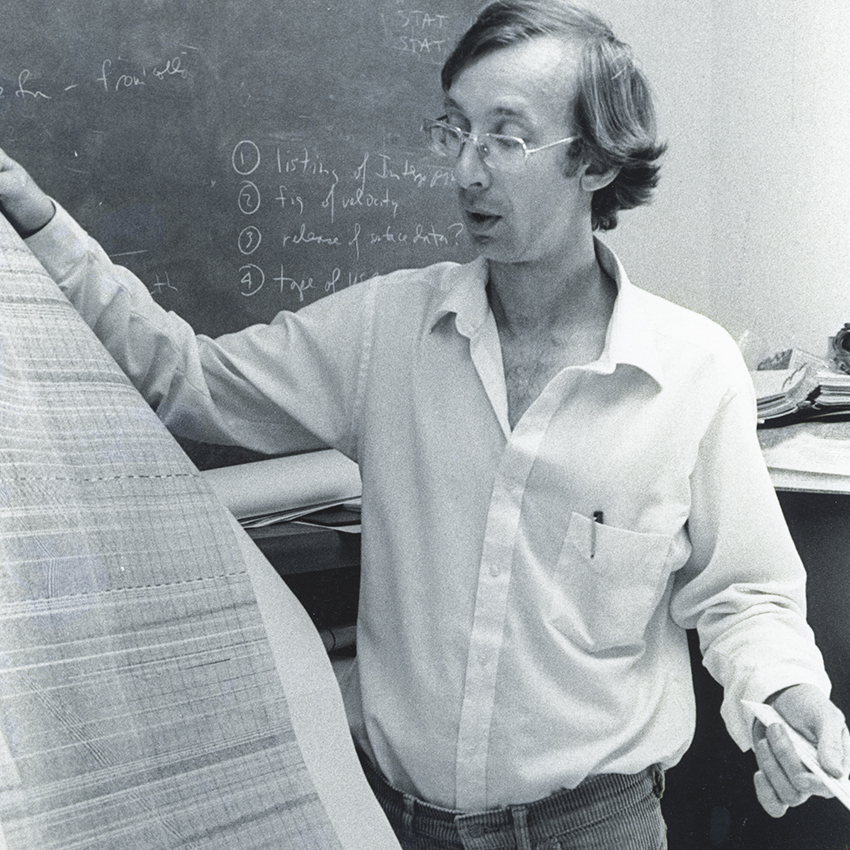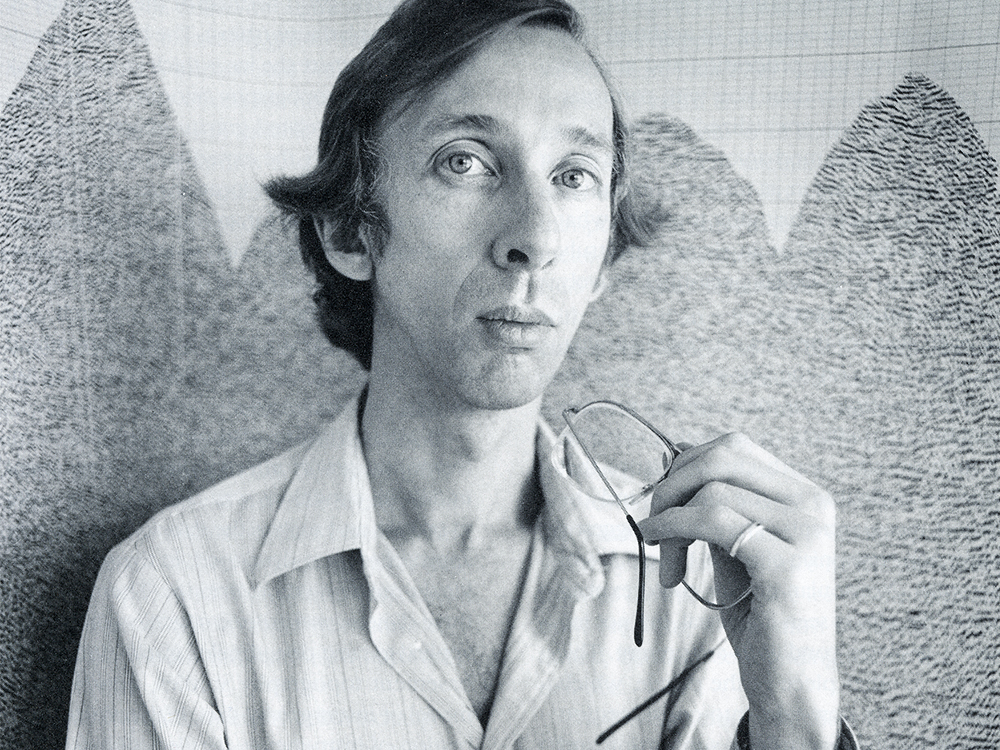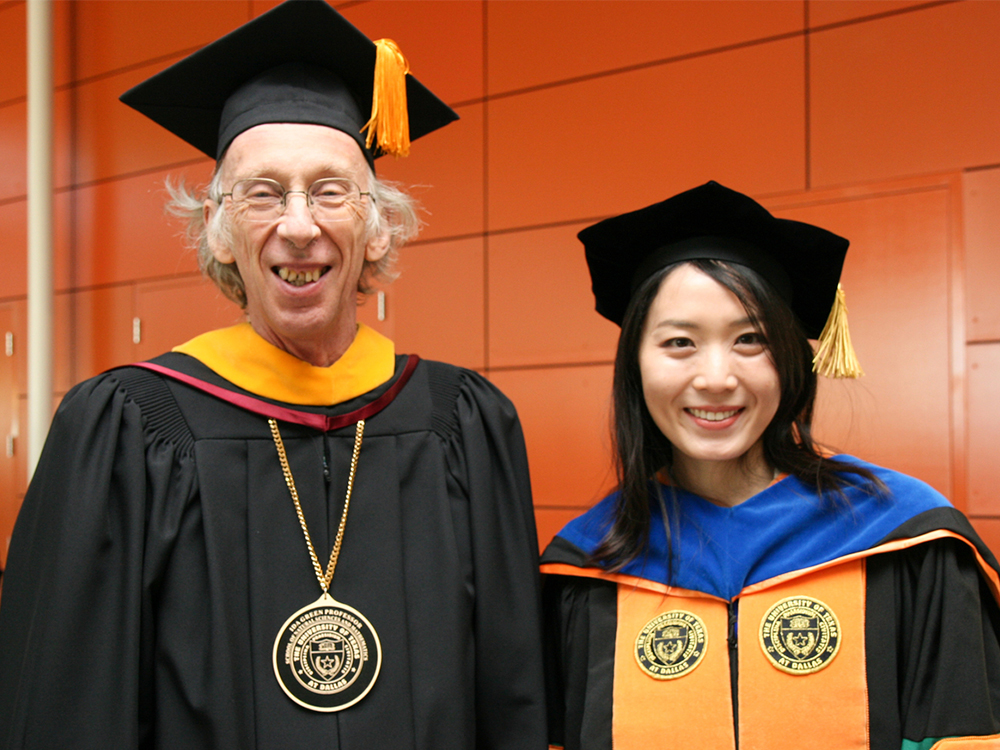Longtime UTD Geosciences Professor Reflects on Career
 In 1985 George McMechan helped provide a one-of-a-kind picture of the Earth’s crust using 800 seismic recorders and a series of 25 explosions along a 30-mile link in southwestern Oklahoma. The detail was about 100 times larger than what had been available previously.
In 1985 George McMechan helped provide a one-of-a-kind picture of the Earth’s crust using 800 seismic recorders and a series of 25 explosions along a 30-mile link in southwestern Oklahoma. The detail was about 100 times larger than what had been available previously.
George McMechan, the Ida Green Professor of geosciences, officially retired from his role as director of UT Dallas’ Center for Lithospheric Studies earlier this fall after 35 years as a faculty member. He’s a recipient of the Maurice Ewing Medal from the Society of Exploration Geophysicists, the highest honor given by the international organization, and was described by its honors and awards committee in 2012 as “perhaps the most complete technical geophysicist who ever lived.” Cecil Green, one of UT Dallas’ co-founders received the first Ewing Award in 1978.
The following is condensed from a conversation with UT Dallas communications manager Stephen Fontenot.
Q: What inspired you to come to UT Dallas?
I had a 10-year career with the Canadian Department of Energy, Mines and Resources. I was frustrated with the budget and the level of computing facilities available there. I was invited to visit Stanford, where one of my co-graduate students was doing his PhD. I took a one-year sabbatical from my job, and that trip really opened my eyes.
After returning from Stanford, I resigned from my government job, and focused my job search on positions in geophysical exploration. My graduate supervisor was then working in Dallas for Mobil. At that time, there happened to be an opening at UTD — oil was booming, companies were hiring and that left openings in academia. The pieces just fell together. I could see there were opportunities here for doing something significant.
Q: How did the Geophysical Consortium come to exist at UT Dallas?
While at Stanford, I discovered one of the first such consortia in the world. Then, like now, it was hard to get federal money. So they skipped that middle man and sought funding straight from the research’s beneficiaries: the oil companies. I thought that was a wonderful idea.
Shortly after I arrived at UTD, I made contacts. At that time, there were several major oil companies nearby — Sohio, Arco, Mobil and ORYX. Some were immediately receptive, in part because they already supported the Stanford consortium.
Q: How has geoscience changed during your tenure in terms of how it is taught?
The content and technology have changed dramatically, but I haven’t really changed my philosophy of teaching. It’s always been hands-on — I like to say, “We don’t just talk about science, we do science.” The only way to understand it is to get in there and do it.
 George McMechan
George McMechan
Q: How has the geoscience program at UT Dallas developed?
Originally, when I started recruiting students, I sent out emails and advertised in various professional newsletters. A few years later, I didn’t have to advertise anymore. The key to that is getting a steady stream of publications in peer-reviewed literature, showing that the students here, as part of their degrees, are performing professional-level work, which makes them very competitive for jobs.
Over time, I’ve graduated between 70 and 80 students, and they’re dispersed through the major companies. It’s a benefit to the University because, as others saw the education you get at UT Dallas, we gradually got a higher quality of applications.
Q: What has kept you here?
Certainly the freedom of an academic position — even with the consortium, I’ve never had a company say I shouldn’t do a particular project. I’ve done things that are somewhat out of the mainstream on a regular basis. I could do almost anything I wanted as long as I could get it funded, and it was legal! Really, it’s the opportunity to work on any scientific problem I wanted to, and the opportunity to obtain good facilities and good students to work with — it’s been ideal.
Q: What’s most rewarding about your job?
As students progress in their research, there comes a point when the light goes on. All the key concepts come together, and now they can really see what they’re doing. They get excited. At that point, they stop being a student and start becoming a professional colleague. That’s when I start learning from them.
The other thing that’s extremely satisfying is the longer-term performance. Are these students living up to the competitive advantage they have when they graduated? And, in general, that has been the case.
Q: What has defined geosciences at UT Dallas across your 35-year tenure?
Our commitment to the quality of the work that we do, and to always being at the leading edge. We’re trying to anticipate the next capabilities of the industry, and what problems will need to be solved. We want to have solutions when they are needed, which means working on them three to five years ahead of time. And we’ve been quite successful at that.
Q: What is the plan from here?
I was fortunate to get an emeritus designation, so I have an ongoing connection with UTD. There are some funds left from the Consortium, which will support my remaining students until they graduate, at which time the plan is to turn that into a scholarship fund or endowment for the benefit of future students.
 Ting Gong PhD’15 received her doctoral hood signifying her doctorate in geosciences from George McMechan in fall 2015.
Ting Gong PhD’15 received her doctoral hood signifying her doctorate in geosciences from George McMechan in fall 2015.



